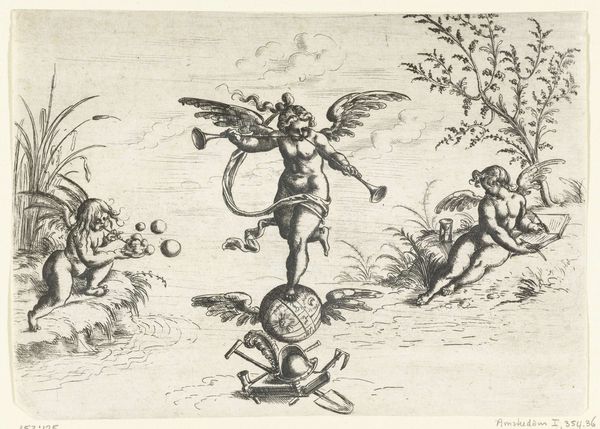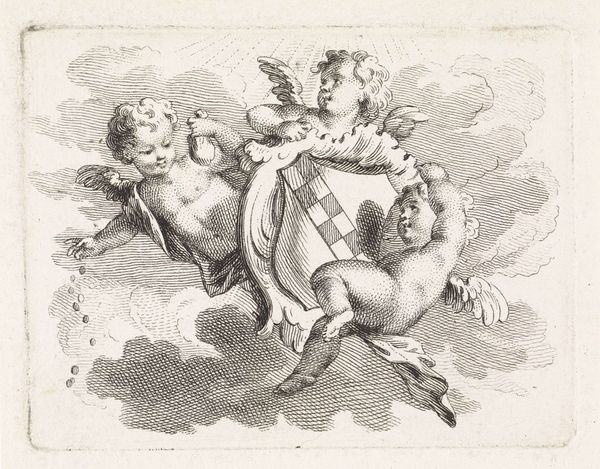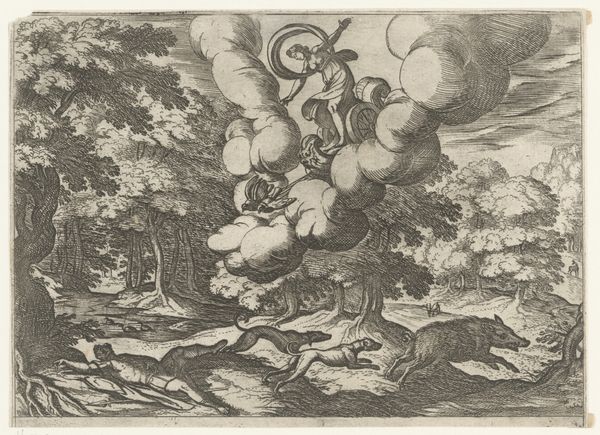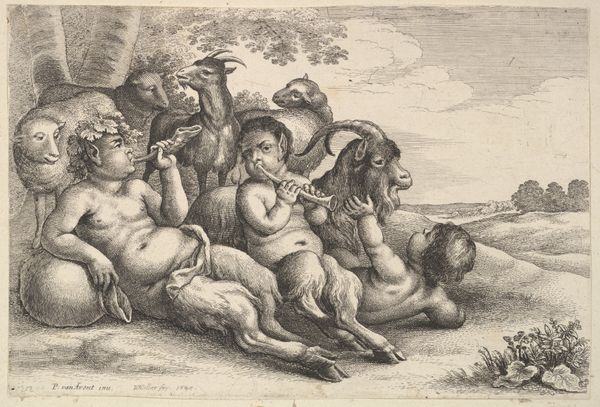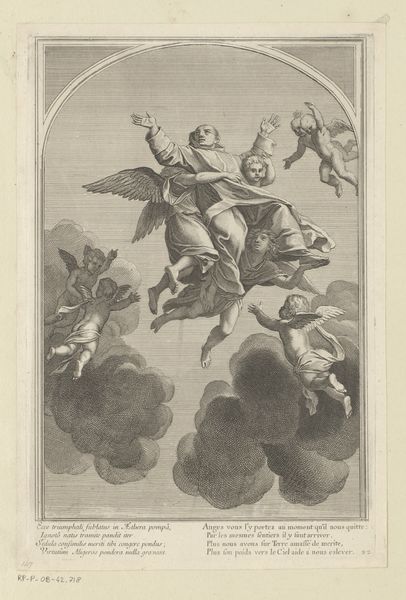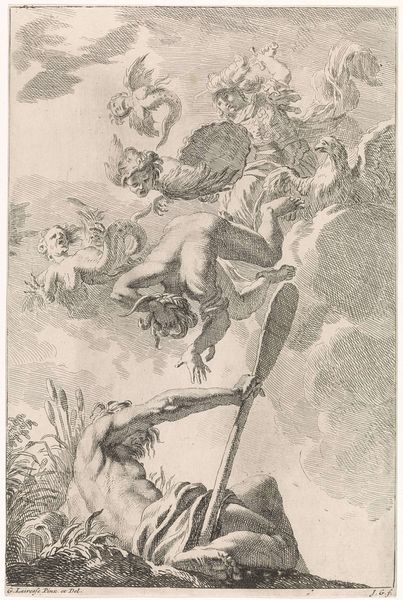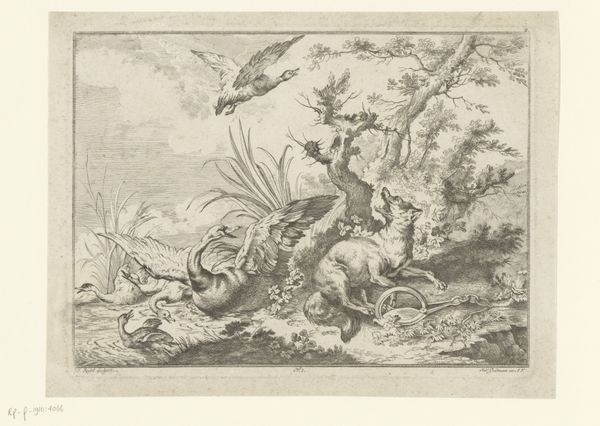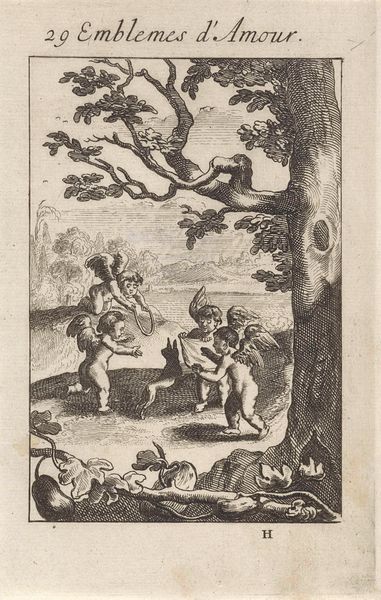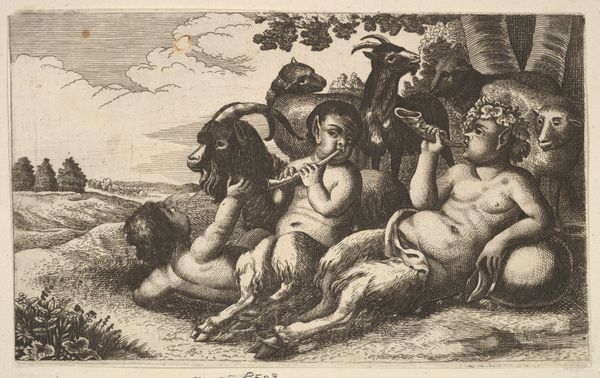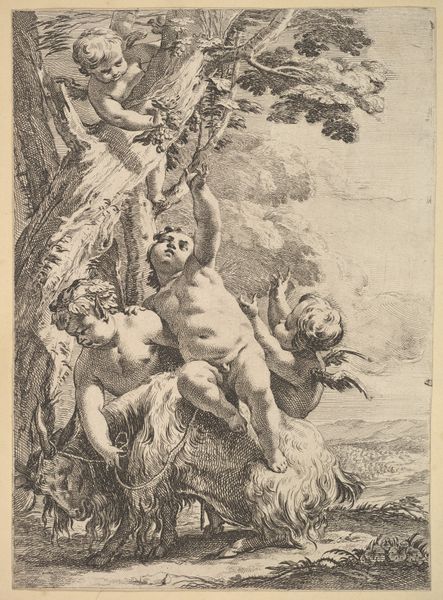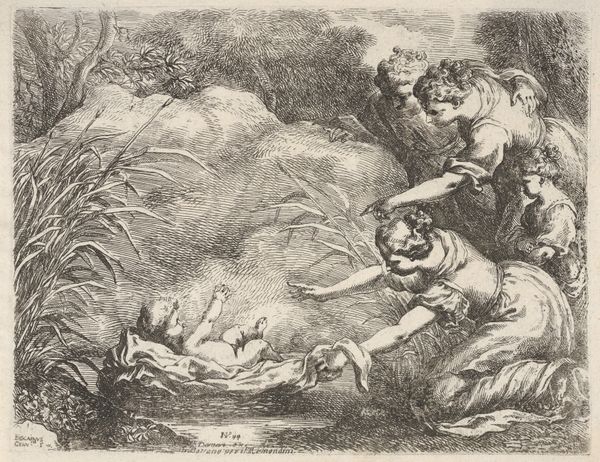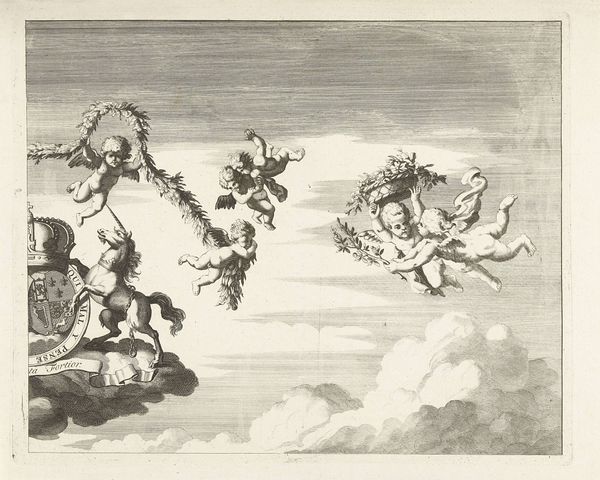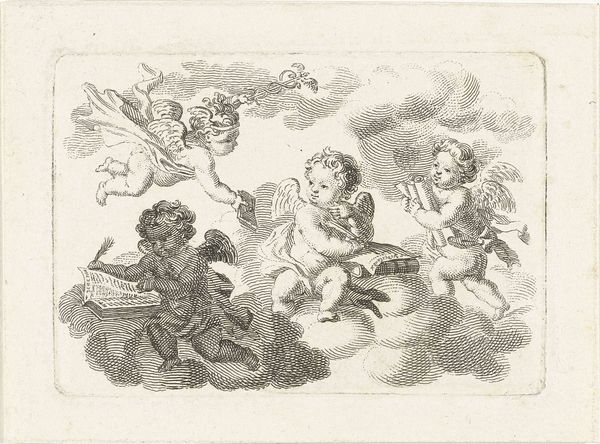
drawing, print, engraving
#
portrait
#
tree
#
drawing
#
allegory
#
baroque
# print
#
landscape
#
bird
#
figuration
#
cupid
#
line
#
engraving
Copyright: Public Domain
Curator: Wenceslaus Hollar's engraving, "Air," created in 1647, presents a fascinating allegory rendered with meticulous line work. Editor: My first impression is one of lightness and ethereal beauty. The floating cherubs against the cloudscape, contrasted with the heavier tree on the left—it's visually quite striking. Curator: Precisely. The composition is carefully structured. Notice how the arrangement of the birds in the tree on the left counterbalances the cluster of cherubs floating on the right, achieving visual harmony despite the differing weights. The clear linearity guides the viewer’s eye throughout the work. Editor: But these aren’t simply pretty cherubs; these are embodiments of baroque excess. I wonder what this piece meant to its original audience. Did the presence of the birds represent different societal stratifications or overseas explorations and their impact on native bird populations, with the cherubs maybe representing some divine commentary? Curator: The symbolic interaction you propose adds a crucial dimension. However, observing the allegorical theme through compositional elements reveals intent as well. Consider the relationship between the texture of the leaves versus the smoothness of the cherubs' skin, made possible only with strategic engraver strokes, and how that reinforces a division between earthly nature and a heavenly ideal. Editor: The level of detail in the engraving is amazing. It looks incredibly precise. However, how might these seemingly disparate elements coalesce in early modern conceptions of the "air" as a tangible, life-giving force as much as a metaphor for ideas and spirit? Are these depictions also subtly reinforcing a rigid European worldview and projecting certain religious views? Curator: You bring up salient cultural contexts. Through an analysis of lines and shapes, we're still drawn to observe the piece and admire the composition through line and shape without having to be tethered to current affairs, wouldn’t you agree? Editor: I concede that one can simply observe this piece for the merit of line, shape and engraving as well, yes. Curator: This engraving then offers us both: an entry point into baroque aesthetics through masterful lines, while prompting thoughtful discussions about its role within a particular worldview. Editor: Agreed. Ultimately it provokes discussion about its technique and potentially loaded themes—and perhaps its contradictions that offer modern viewers much to reflect on.
Comments
No comments
Be the first to comment and join the conversation on the ultimate creative platform.
